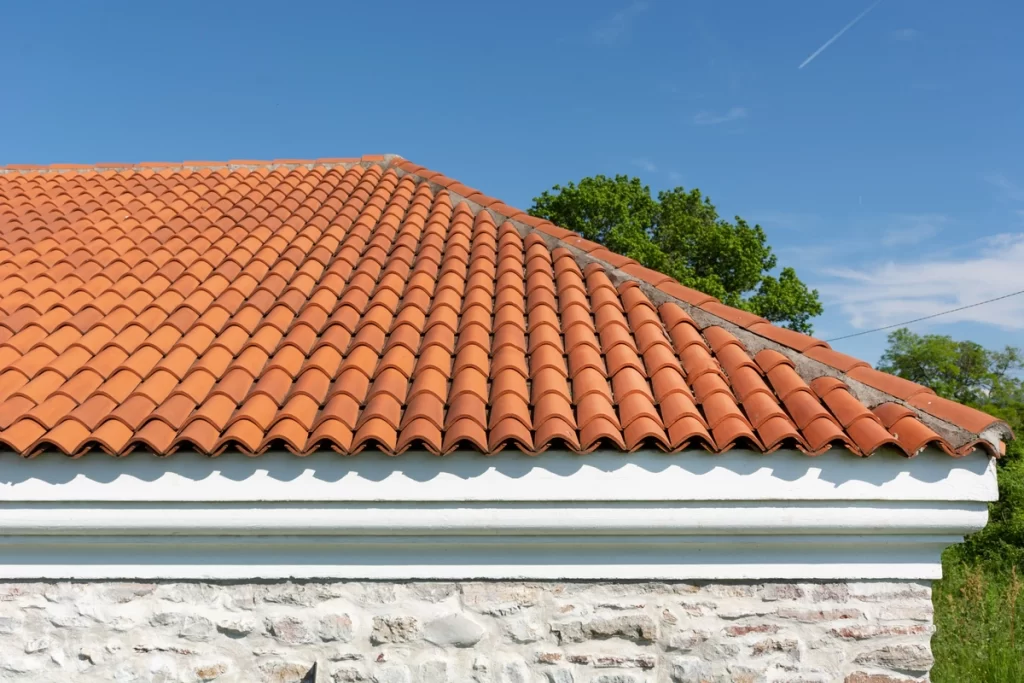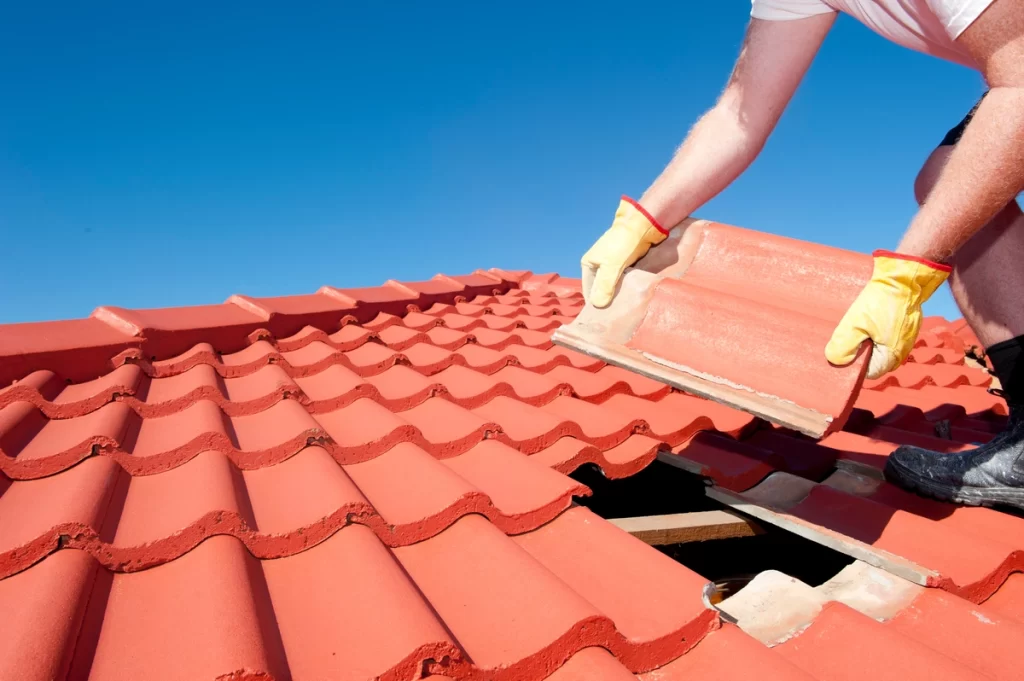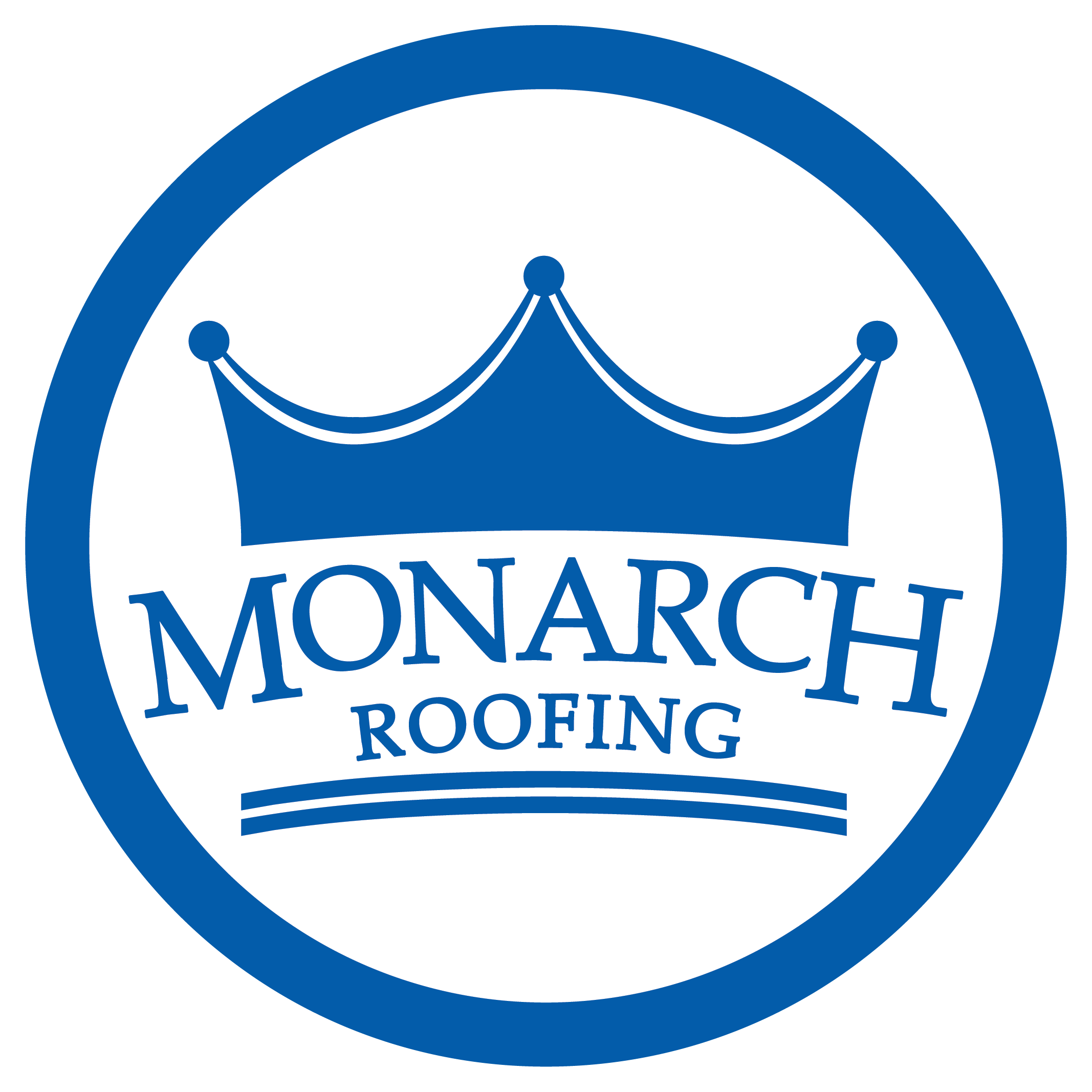Are you interested in upgrading your roofing system, but not sure white roof type is right for you?
When it comes to roofing materials, tile has long been favored for its durability, aesthetic appeal, and longevity. With roots tracing back thousands of years, tile roofs have stood the test of time, gracing structures with their timeless beauty and exceptional performance. But how much does a tile roof cost? And how do you know if it is right for you?
We’ve got the answers you’ve been looking for! We’re diving into every aspect of tile roofing, including:
- Installation
- Maintenance
- Costs
- Pros and cons of tile roofing
Keep reading for a free guide to all things tile roofing related!
What is a Tile Roof?

A tile roof is a roofing system composed of individual overlapping tiles, typically made from materials such as clay, concrete, or slate. These tiles are laid in rows, with each row overlapping the one beneath it, creating a protective barrier against the elements. Tile roofs come in a variety of styles, including Spanish, Mediterranean, and contemporary, allowing homeowners to choose a design that complements their architectural preferences.
Pros and Cons of Tile Roofing
Before investing in a tile roof, be sure to consider all the factors, both negative and positive. Here are some of the big pros and cons of tile roofing.
✅ Pros:
- Durability: Tile roofs are renowned for their longevity, often lasting 50 years or more with proper maintenance.
- Aesthetic Appeal: With their elegant appearance and wide range of colors and styles, tile roofs enhance the curb appeal of any home.
- Fire Resistance: Clay and concrete tiles are inherently fire-resistant, offering added protection to homes in fire-prone areas.
- Energy Efficiency: Tile roofs provide excellent insulation, helping to regulate indoor temperatures and reduce heating and cooling costs.
- Low Maintenance: Compared to other roofing materials, tile requires minimal maintenance, saving homeowners time and money in the long run.
❌ Cons:
- Cost: Tile roofing can be more expensive upfront compared to asphalt shingles or metal roofing.
- Weight: Tile roofs are heavier than other roofing materials, requiring additional structural support and potentially increasing installation costs.
- Fragility: While durable, individual tiles can crack or break if subjected to heavy impact, such as falling branches or hail.
- Complex Installation: Proper installation of tile roofing requires skilled professionals with experience working with this material.
Cost of Installing and Maintaining a Tile Roof
The cost of installing a tile roof can vary depending on several factors, including the type of tiles selected, the size and complexity of the roof, and the location of the property. On average, homeowners can expect to pay between $10 to $20 per square foot for a new tile roof installation. For a typical 2,000 square foot roof, this equates to a total cost of $20,000 to $40,000.
In addition to installation costs, homeowners should also budget for ongoing maintenance to ensure their tile roof remains in optimal condition. While tile roofs are relatively low maintenance compared to other materials, periodic inspections and repairs may be necessary to address issues such as cracked or displaced tiles, debris buildup, and flashing damage. Annual maintenance costs for a tile roof typically range from $200 to $600, depending on the extent of the work required.
How to Take Care of Your Tile Roof

Proper maintenance is key to maximizing the lifespan of your tile roof and preserving its beauty and functionality. Here are some essential maintenance tips:
Regular Inspections 🗓️
Conduct visual inspections of your roof at least once or twice a year, looking for signs of damage such as cracked or broken tiles, loose or missing mortar, and debris buildup.
Clean Gutters and Downspouts 🍂
Keep gutters and downspouts clear of leaves, branches, and other debris to prevent water from backing up and causing damage to your roof.
Trim Overhanging Branches ✂️
Trim back tree branches that hang over your roof to prevent them from rubbing against or falling onto the tiles.
Repair Damage Promptly 🧰
Address any issues or damage promptly to prevent minor problems from escalating into more extensive and costly repairs.
Professional Maintenance 👷🏼♂️
Schedule annual inspections and maintenance with a qualified roofing contractor to ensure your roof remains in optimal condition.
By following these maintenance guidelines, you can extend the lifespan of your tile roof and minimize the need for costly repairs down the line.
How Long Does a Tile Roof Last?
One of the most significant advantages of tile roofing is its exceptional longevity. With proper installation and maintenance, a tile roof can last 50 years or more, outlasting many other roofing materials. Clay and concrete tiles are particularly durable, with some historic tile roofs still standing strong after centuries of service. However, it’s essential to note that the lifespan of a tile roof can vary depending on factors such as climate, maintenance practices, and the quality of the installation.
Signs That You Need to Replace Your Tile Roof
While tile roofs are known for their durability, there may come a time when replacement is necessary. Here are some signs that indicate it’s time to replace your tile roof:
- Cracked or Broken Tiles: If you notice numerous cracked or broken tiles across your roof, it may be a sign of underlying issues such as age, weathering, or structural damage.
- Leaks or Water Damage: Water stains on your ceiling or walls, as well as signs of water infiltration in your attic, indicate that your roof may be compromised and in need of replacement.
- Sagging or Uneven Roof Surface: A sagging or uneven roof surface can indicate structural issues that compromise the integrity of your roof and require immediate attention.
- Excessive Wear and Tear: If your tile roof is showing signs of excessive wear and tear, such as surface erosion, granule loss, or fading, it may be nearing the end of its lifespan and in need of replacement.
- Mold or Mildew Growth: Mold or mildew growth on your roof or in your attic can indicate poor ventilation and moisture issues that warrant roof replacement to prevent further damage and health hazards.
If you observe any of these signs, it’s essential to consult with a qualified roofing professional to assess the condition of your roof and determine the best course of action.
Learn More About Tile Roof Installation Costs
While the initial cost of installing a tile roof may be higher than other roofing materials, its exceptional durability, longevity, and aesthetic appeal make it a worthwhile investment for homeowners looking for a roofing solution that combines beauty and performance. By understanding the factors that influence tile roof cost, as well as proper maintenance practices and signs of potential issues, homeowners can enjoy the benefits of a tile roof for decades to come.
Want to learn more about tile roof installation cost expectations? Contact Monarch Roofing today to get a quote on your roofing project.





